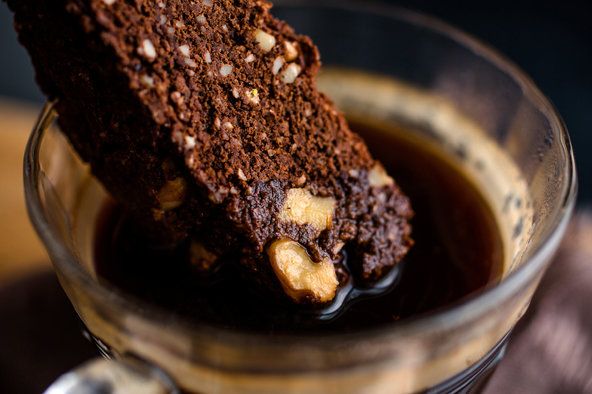Republished from October 17, 2012
 Yes, I’m on a pumpkin kick but the the sweet, small “pie” pumpkins have been plentiful in the market this year and I found an easy way to roast them. But, is your lacking time, canned pumpkin works just as well. My favorite is Libby’s which can be found in most grocery stores year round and you cannot beat the pie recipe in the label.
Yes, I’m on a pumpkin kick but the the sweet, small “pie” pumpkins have been plentiful in the market this year and I found an easy way to roast them. But, is your lacking time, canned pumpkin works just as well. My favorite is Libby’s which can be found in most grocery stores year round and you cannot beat the pie recipe in the label.
So let’s start with picking the pumpkin. Pie pumpkins are small, about 8 inches in diameter and yield about two to three cups of puree per pumpkin. Like picking any squash, look for one that is firm, no bruises or soft spots, and a good orange color.
To bake the pumpkin: This method from The Pioneer Woman works amazingly well, except don’t cut up the pumpkin. I found it easier to clean the “guts” out after the pumpkin was cooked.
As I said, you should have about 2 to 3 cups of puree per pumpkin.
Now you’re ready to make soup. I’ve tried various recipes and ended up with my own version.
Ingredients:
In a large sauce pan, heat 1/4 cup of vegetable broth over medium heat. Add the chop onion, and cook until tender, about 3 minutes. Add more broth if needed, do not let the onion dry out.
Add the remaining broth, pumpkin, cinnamon and nutmeg. Bring to a boil, reduce heat and simmer for 5 minutes. Stir in the cream and cook until hot. Don’t boil.
Ladle into warmed individual bowls and garnish with black pepper. Serve immediately.
I serve the soup garnished with parsley and toasted pumpkin seeds, shredded Gruyere, croutons, chopped green onions and sour cream on the side.

 Welcome to the
Welcome to the 
 On this day in 1872, fire rips through Boston.
On this day in 1872, fire rips through Boston.
Recent Comments